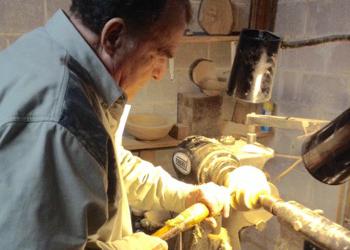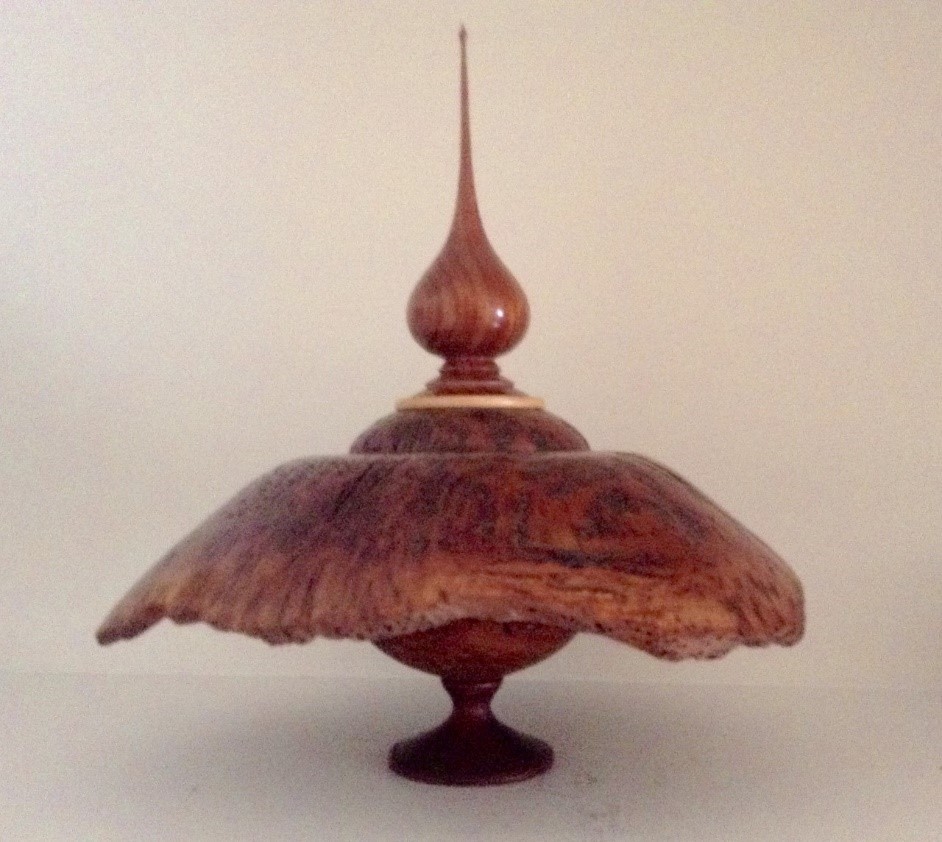UWA spring exhibit features Hubbard’s woodturning art

Artist, visionary, philanthropist Bill Hubbard turns knots to masterpieces
The University of West Alabama will host an exhibit of works by woodturning artist Bill Hubbard beginning Feb. 20. The spring exhibit will be on display on campus in Webb Hall Gallery. An opening reception will be held at 2 p.m., and the public is invited to attend.
Hubbard has studied and practiced the art of woodturning for more than 20 years. Fascinated by elegant wooden pens at a craft show, his interest led to the purchase of his first lathe, a machine that spins wood on an axis to allow the craftsman to create symmetrical designs as it turns rapidly.
The pieces in this exhibit range in size, shape, style, and material. Hubbard says his favorite materials are the burls on a tree, those rounded knotty growths that appear to be deformations. Through his honed skill, Hubbard quite literally turns knots into masterpieces.
Hubbard describes burls as the “ugly knots of undetermined cause on a tree that look almost like a cancer on the tree.” But once in contact with a lathe and a powerful imagination, Hubbard says, “there is nothing quite as mysterious or beautiful than the product of working a burl.”
Among his many works of art are a hollowed-out vessel from an Australian Jarah burl, a platter from a Mesquite burl that he has inlaid with turquoise, and a vessel made from a Katalox burl with a turned ebony finial. A turkey hunter brought to him a 300-pound burl from a Water Oak in Epes, Ala., that he turned into an exquisite artifact nearly three feet in diameter. It is a magnificent centerpiece of his home, a museum in its own right.

Hubbard suggests that once a person develops a passion for creating art with wood, he finds himself with endless opportunities, especially when living three miles down a clay and rock road into the deep woods surrounding the picturesque Cahaba River of Alabama.
As a young boy in Birmingham, Hubbard loved nature. He took trips with his family to visit relatives living in Bibb County by the Cahaba River. So began his fascination with the beautiful Cahaba and its reputation for biodiversity. At the University of Alabama, he majored in geology. He then enjoyed 40 years in oil and gas exploration as a scientist involved in buying companies, improving them and reselling them.
According to Hubbard, his profession was exciting, fun, challenging and rewarding. After his initial retirement, he received a cold call asking him to be vice president of explorations for a new company, Spinnaker Explorations. He accepted, and there he enjoyed acquiring and interpreting 3-D seismic data and discovering significant oil strikes in the Gulf of Mexico. Yet, all his work was indoors at a computer and the outdoors beckoned him.
Retiring a second time, Hubbard asked his cousin, a forester, to help him find property along the Cahaba River where he could continue the thrill of exploration. This time it would be an exploration of rare flora, fauna and the river. And a quiet place to develop his craft.
With foresight and generosity, Hubbard has made an invaluable donation of this treasured property spanning more than 2,000 acres for the establishment of UWA’s Cahaba Biodiversity Center, which will serve as an outdoor classroom and routine field trip destination for UWA students. The University will also coordinate and manage the facility for research, creating a world-class opportunity to study in one of the most diverse ecosystems in the country.